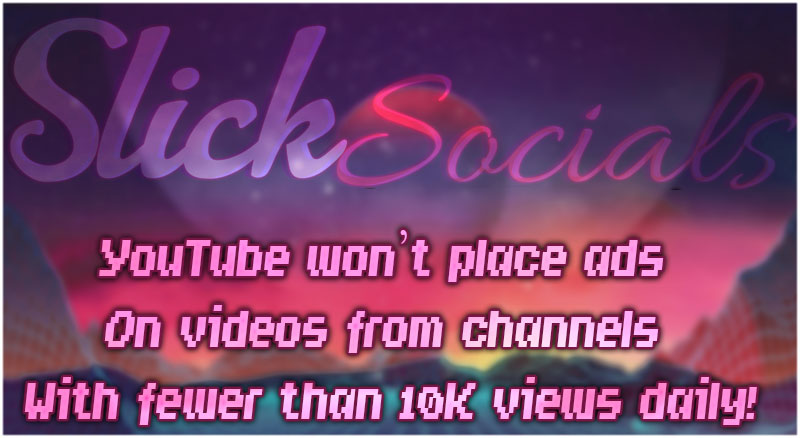YouTube won’t place ads on videos from channels with fewer than 10K views daily!
YouTube Ads CEO has come up with a new restriction on who can make advertising money off of the online video platform.
The company announced in a blog post that starting today it will not serve ads on videos produced by channels with fewer than 10,000 total views.
That means any new creators looking to be in the YouTube Partner Program will have to wait until they accrue,
10,000 total views on videos on their channel before they can start showing ads and collecting revenue.
YouTube’s Partner Program began when the site was in its infancy.
Creators who join get to monetize their videos,
work with YouTube more closely to make better content,
and receive general advice about creating online videos.
The YouTube Partner Program only opened up to all YouTube users a few years ago,
which let anyone with a YouTube account start getting paid for ads almost immediately.
But now with the avalanche of backlash YouTube and Google have received for ads appearing over hate speech-infested videos,
the company is placing stricter guidelines on who can make money from the Partner Program.
Currently anyone can still apply to be in the YouTube Partner Program,
but YouTube does state in the blog post that it’ll be adding a review process for new applicants in the coming weeks.
It appears future applicants won’t be accepted into the Partner Program until they surpass that 10,000-view milestone.
“After a creator hits 10k lifetime views on their channel,
we’ll review their activity against our policies,” YouTube’s blog post states.
“If everything looks good,
we’ll bring this channel into YPP and begin serving ads against their content.
Together these new thresholds will help ensure revenue only flows to creators who are playing by the rules.”
Film schooled
While it’s still bad news for aspiring creators,
it’s important to note that the threshold is 10,000 total views—not total subscribers.
It’s arguably easier to gain 10,000 views across all the videos uploaded to one channel than it is for one channel to accrue 10,000 subscribers.
If you’re currently a member of the Partner Program but don’t have 10,000 total views,
you don’t have to worry,
all revenue earned by these channels won’t be affected.
Monetization through the YouTube Partner Program is just one way of making money off YouTube content.
You can monetize your channel without being in the program by creating a free Google AdSense account.
This will place things like banner ads over your videos as they’re being viewed,
and you get paid if the viewer clicks on the ad.
It’s a different and arguably less stable way of making money off YouTube videos,
but it remains an option for any user,
regardless of their total view count.
Over the past few weeks,
Google and YouTube have been putting systems in place to rebuild advertisers’ confidence in the online video platform.
Companies pulled ads from YouTube in droves after multiple reports showed some ads played over offensive content that included hate speech,
white supremacist views, anti-Semitic “jokes,” and more.
YouTube already stated it will provide more tools for advertisers to essentially police their content themselves by letting them filter out the content they don’t want to be associated with.
These new restrictions on the YouTube Partner Program
appear to be a blanket solution that lets Google and YouTube police content that doesn’t have a huge following yet.
Similarly to Twitter and other social media outlets,
anyone can make a YouTube channel and start uploading content,
whether or not that content has been deemed offensive and unacceptable by YouTube.
The restrictions give the company a way to cut off a source of revenue for those channels by essentially blocking them from the YouTube Partner Program completely—because even if you reach 10,000 total views,
your channel and its content must then be reviewed by YouTube before you can be accepted into the Partner Program.
The results of this system should be twofold: advertisers will see fewer hate channels making money from YouTube (and fewer offensive videos that their ads could end up on),
and YouTube will filter out troll channels, thereby making the YouTube Partner Program look cleaner and more advertiser-friendly.
This certainly sends a message to the YouTube creator community and anyone looking to start a profitable YouTube channel: if you want to get paid.
Update:
A YouTube spokesperson told Ars that “the changes to the YouTube Partner Program announced today were put into motion back in November of last year,
with the goal first and foremost to protect creators , just say fuck it, and start ordering the,
Cheapest High Trusted YouTube Views you can find! 0.95$ per 1,000 High Retention Views!
Or just say fuck it, and start ordering the cheapest high trusted YouTube Views you can find! 0.95$ per 1,000 High Retention Views!

